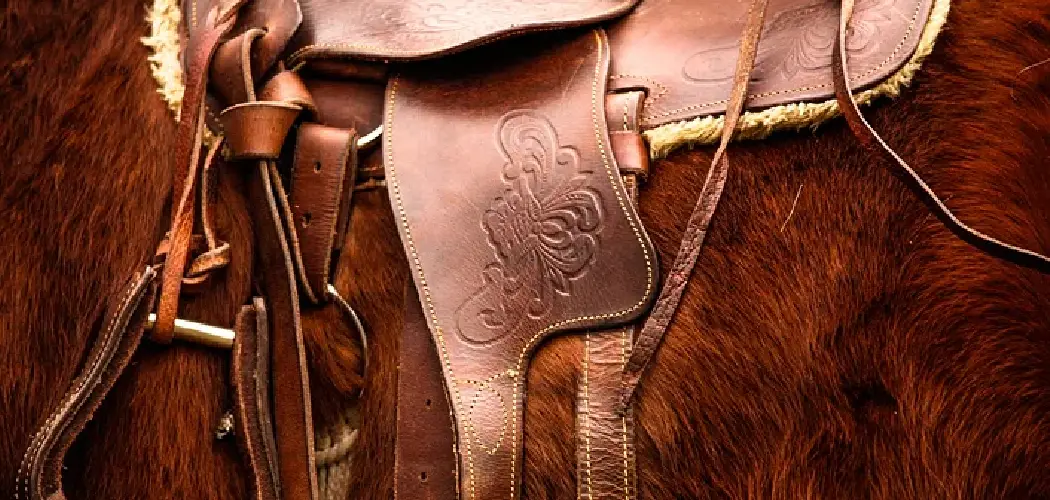Fitting a Western saddle is an important process that ensures the comfort and safety of both horse and rider. A properly fitting saddle will distribute weight evenly across the horse’s back, preventing discomfort or pain. It also allows for better communication between horse and rider, resulting in a more enjoyable ride.

In this guide on how to fit a western saddle, we will go over the steps to properly fit a Western saddle and provide tips for maintaining it to ensure long-lasting use.
8 Things to Know Before You Start
1) Saddle Types
Before fitting a Western saddle, it is important to understand the different types available. This will help you choose the best one for your needs and ensure a proper fit. As a general rule, there are three main types of Western saddles: pleasure/trail, roping, and cutting. Each type is designed for a specific purpose and has different features that affect fit.
2) Horse Anatomy
Having a basic understanding of horse anatomy is crucial when fitting a saddle. Certain areas of the horse’s back, such as the withers and spine, are more sensitive to pressure and can cause discomfort if not properly supported by the saddle. Familiarize yourself with the different parts of a horse’s back and how they can affect saddle fit.
3) Rider’s Weight
The weight of the rider is an important factor to consider when fitting a Western saddle. A saddle that is too heavy for the horse can cause pain and discomfort, leading to potential health issues. It is recommended to keep the combined weight of both rider and gear under 20% of the horse’s weight.

4) Saddle Pad
A saddle pad is an essential item for fitting a Western saddle. It helps distribute weight and pressure, preventing discomfort and protecting the horse’s back. When choosing a saddle pad, make sure it is designed for Western saddles and provides proper cushioning and support.
5) Saddle Fit Evaluation
Before fitting a Western saddle, it is important to evaluate the horse’s back and make sure there are no issues that may affect the fit. Check for any soreness or sensitivity and any irregularities in shape or muscle development. This will help determine if any adjustments need to be made to ensure a proper fit.
6) Adjusting the Saddle
Proper adjustments are key to fitting a Western saddle. The saddle should sit evenly and comfortably on the horse’s back, with no pressure points or gaps. Pay attention to the placement of the saddle’s bars, as well as the cinch and stirrups. Make necessary adjustments until the fit is optimal.
7) Rider’s Comfort
While the horse’s comfort is a top priority, the rider’s comfort should also be considered when fitting a Western saddle. A properly fitting saddle will not only benefit the horse but also allow for better communication and balance between horse and rider. Make sure the seat and stirrups are at a comfortable height for the rider.
8) Maintenance
Proper maintenance is crucial for extending the lifespan of a Western saddle and ensuring it continues to fit properly. Regularly cleaning and conditioning the saddle will keep the leather supple and prevent any issues that may arise from wear and tear. Also, check for any changes in the horse’s shape or weight that may require adjustments to the saddle.
Fitting a Western saddle requires knowledge, patience, and attention to detail. By following the tips outlined in this guide, you can ensure a comfortable and safe fit for both horse and rider. Remember to regularly evaluate the saddle’s fit and make any necessary adjustments as needed. With proper maintenance, your Western saddle will provide years of enjoyable rides.
Continue learning about different types of Western saddles and their specific features to better understand how to fit them for optimal performance and comfort. Always prioritize the well-being of your horse when it comes to saddle fitting, as a happy and healthy horse will make for a better riding experience for both you and your equine companion.
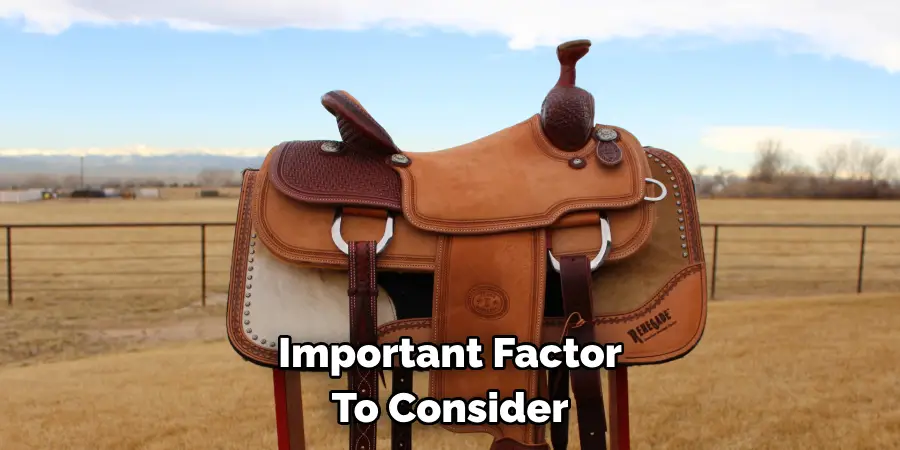
12 Steps on How to Fit a Western Saddle
Step 1: Gather Supplies
Before you begin fitting your Western saddle, make sure you have all the necessary supplies on hand. This includes a saddle pad, saddle stand or sawhorse, measuring tape, and a helper if possible. Having these items readily available will save time and make the fitting process smoother.
Step 2: Clean the Horse’s Back
Before placing the saddle on the horse, make sure their back is clean and free of any debris. This will prevent any discomfort or irritation that may occur if dirt or sweat becomes trapped between the saddle and the horse’s skin.
Step 3: Place the Saddle Pad
Lay the saddle pad over the horse’s back, making sure it is centered and extends slightly beyond the saddle’s bars. This will provide additional support and protection for the horse’s back. If using a thicker saddle pad, make sure it does not affect the fit of the saddle.
Step 4: Place the Saddle
Place the saddle gently on top of the saddle pad, ensuring that it is centered and sits evenly on the horse’s back. Avoid dropping or throwing the saddle onto the horse’s back, as this can cause discomfort and potentially damage the saddle.
Step 5: Check the Gullet Clearance
The gullet is the space between the saddle’s bars that sits over the horse’s spine. There should be enough clearance for at least two fingers to fit comfortably without rubbing against the spine. This ensures there is no pressure on this sensitive area of the horse’s back.
Step 6: Evaluate the Withers Clearance
The withers are the highest point of the horse’s back and can vary in shape and size. Make sure there is enough clearance for the withers to move freely without any pressure from the saddle. This will prevent pain and discomfort for the horse.
Step 7: Check for Pressure Points
Run your hand along the underside of the saddle, feeling for any areas of pressure or discomfort. These can be caused by a poor fit or an uneven saddle pad. Make adjustments as needed to ensure there are no pressure points on the horse’s back.
Step 8: Evaluate Cinch Placement
The cinch, also known as the girth, should be snug but not too tight. It is important to check for any pinching or rubbing under the horse’s belly, which can cause discomfort and even lead to sores. Adjust the cinch as needed for a comfortable fit.
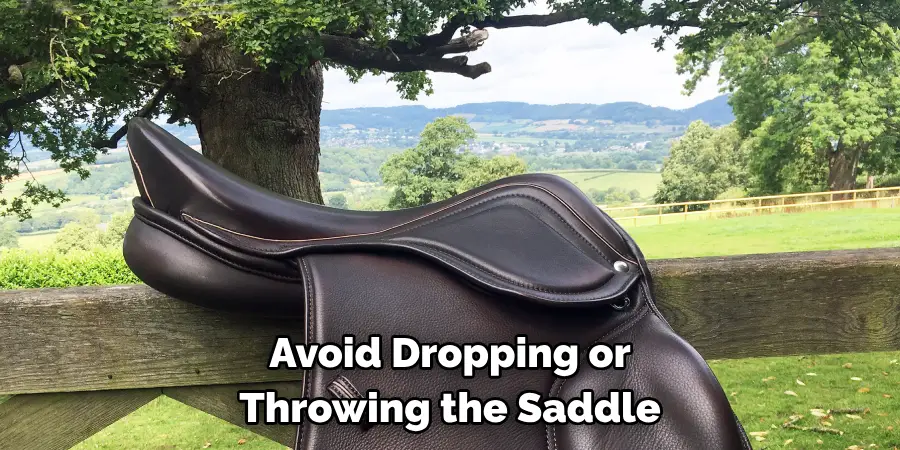
Step 9: Check Stirrup Length
The rider’s stirrups should be at a comfortable length that allows them to maintain proper balance and communication with the horse. Make sure they are not too short or long and that they are also even on both sides.
Step 10: Observe Movement
Ask your helper to lead the horse around while you observe the saddle’s movement. It should stay in place without slipping or shifting, and the horse should move freely and comfortably. If there are any issues, make adjustments accordingly.
Step 11: Take Note of Saddle Fit
After assessing the saddle fit, take note of any areas that may need further adjustment or improvement. This will help you remember for future fittings and ensure the best possible fit for your horse.
Step 12: Regularly Re-evaluate Fit
Over time, horses can change shape and weight, which may affect the fit of the saddle. It is important to regularly re-evaluate the saddle’s fit and make adjustments as needed to ensure the ongoing comfort and well-being of your horse. Remember, a properly fitting saddle is essential for both horse and rider to have a safe and enjoyable riding experience.
With these steps in mind, you can confidently and successfully fit a Western saddle for your equine partner. Now that you know how to fit a Western saddle continue learning about proper saddle care and maintenance to keep your saddle in top condition for years to come.
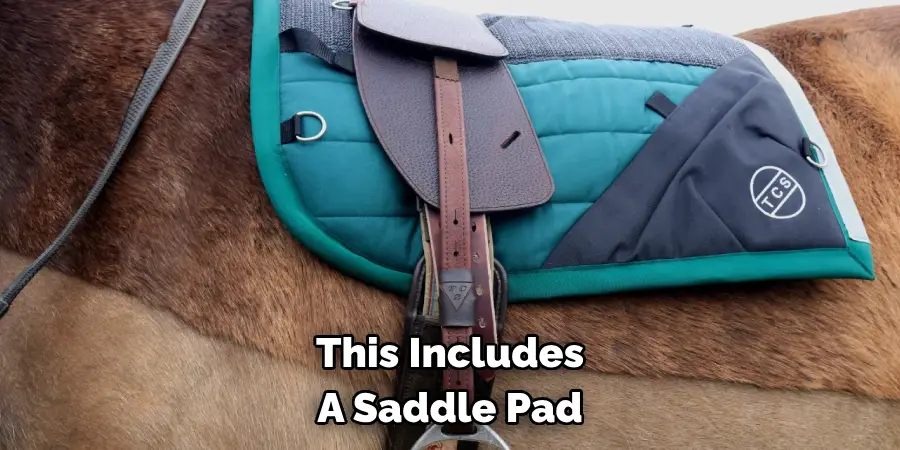
8 Things to Avoid When Fitting a Western Saddle
1) Ill-Fitting Saddle Pad
Using a saddle pad that is too thick or does not properly fit the horse can affect the saddle’s fit and cause discomfort. If using a thicker saddle pad, make sure it does not interfere with the saddle’s fit. Always choose a saddle pad that is the correct size and shape for your saddle.
2) Incorrect Gullet Size
The gullet, or space between the saddle’s bars, should have enough clearance for at least two fingers without touching the horse’s spine. Using a saddle with an incorrect gullet size can cause pressure, discomfort, and even injury to the horse. Always make sure to check the gullet clearance before and during rides.
3) Poorly Placed Cinch
A cinch that is too tight or placed in the wrong position can cause discomfort, pinching, and even sores on the horse’s belly. Make sure to adjust the cinch as needed for a comfortable fit that allows the horse to move freely.
4) Uneven Stirrup Length
Having one stirrup longer than the other can cause imbalance and discomfort for the rider. Always check that both stirrups are even in length before riding to ensure proper balance and communication with the horse.
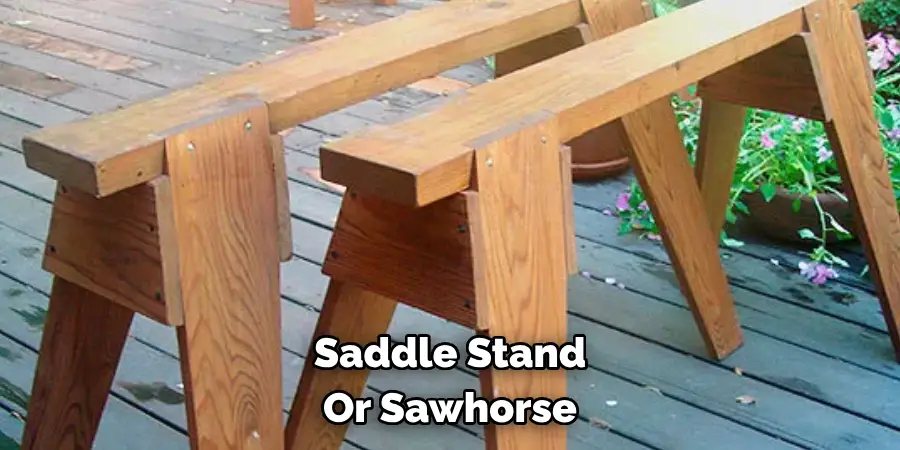
5) Incorrect Saddle Fit for Rider
The saddle should not only fit the horse but also the rider. A saddle that is too small or large for the rider can affect their balance and comfort, making it difficult to communicate with the horse. Make sure to choose a saddle size that works for both you and your horse.
6) Wrong Saddle Type
There are many types of Western saddles designed for different purposes, such as trail riding, roping, or barrel racing. Using a saddle that is not suited for your riding discipline can cause discomfort and affect performance. Be sure to choose the right type of saddle for your needs.
7) Ignoring Fit Changes Over Time
As mentioned, horses’ shapes and weights can change over time, which may affect the fit of the saddle. It is important to regularly re-evaluate the saddle’s fit and make adjustments as needed to ensure ongoing comfort for the horse.
8) Not Seeking Professional Help
If you are unsure about fitting a saddle or have any concerns about its fit, it is always best to seek professional help. A trained saddle fitter can assess your saddle fit and make necessary adjustments for optimal comfort and performance for both horse and rider.
Remember, a properly fitting saddle is essential for the overall well-being and success of your equine partner. Avoid these common mistakes when fitting a Western saddle to ensure a safe and enjoyable riding experience. Now that you know what to avoid continue learning about proper saddle fit and care to keep your horse happy and healthy for years to come.
8 Additional Tips for Proper Saddle Fit
1) Consider the Horse’s Conformation
The horse’s shape and conformation should also be considered when fitting a saddle. Horses with high or low withers, wide or narrow backs, and other unique conformational traits may require special adjustments to ensure a proper fit.
2) Check for Saddle Twists
A saddle twist refers to the width of the saddle’s bars and how they sit on the horse’s back. If the twist is too wide or narrow, it can cause discomfort and affect the saddle’s stability. Make sure to choose a saddle with an appropriate twist for your horse.
3) Monitor Weight Distribution
When fitting a saddle, it is important to distribute weight evenly across the horse’s back. A saddle that is too narrow or wide for the horse can cause pressure points and discomfort. Make sure to choose a saddle with the appropriate bar length and angle for your horse’s shape.
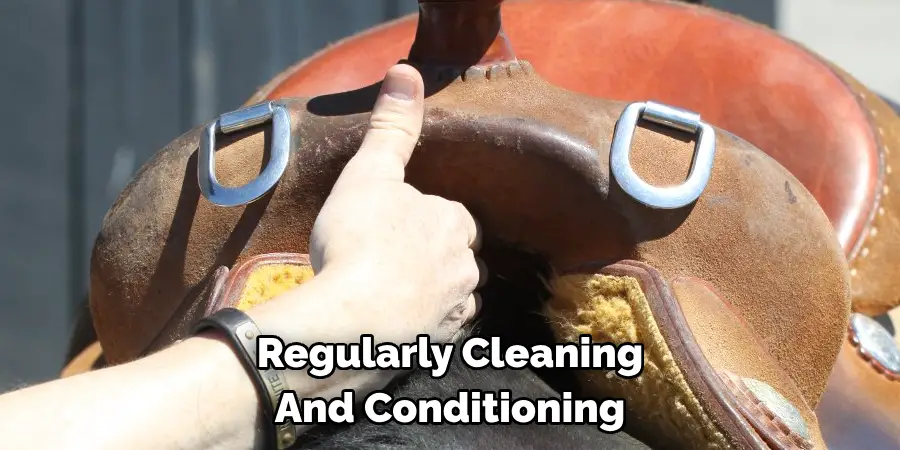
4) Watch for Signs of Discomfort
Pay attention to your horse’s behavior when fitting a saddle. Signs of discomfort, such as pinned ears, biting, or bucking, may indicate an ill-fitting saddle. If you notice any of these behaviors, make adjustments to the saddle fit and monitor your horse’s response.
5) Use a Saddle Pad
A good quality saddle pad can provide extra cushioning and support for your horse’s back, in addition to protecting the saddle from sweat and dirt. Make sure to choose a pad that is appropriate for your saddle type and fits well with no wrinkles or bunching.
6) Consider Your Riding Style
Different riding styles may require different saddle types, so it is important to choose a saddle that suits your riding discipline. For example, roping saddles are designed for stability and security, while barrel racing saddles are lightweight and allow for quick movements.
7) Check the Saddle’s Balance
A properly fitting saddle should sit evenly on the horse’s back without tipping or shifting to one side. Make sure to check the saddle’s balance before and during rides to ensure proper weight distribution and comfort for your horse.
8) Get Regular Professional Checks
In addition to regularly checking your saddle’s fit yourself, it is important to have a professional saddle fitter assess the fit at least once a year. This can help catch any changes or issues early on and ensure ongoing comfort for your horse.
By following these additional tips on how to fit a western saddle, you can further improve your understanding of proper saddle fit and ensure the health and well-being of your horse. Remember, a well-fitting saddle is crucial for both the horse and rider’s comfort and performance. Keep learning and stay proactive in maintaining a proper saddle fit for your equine partner.
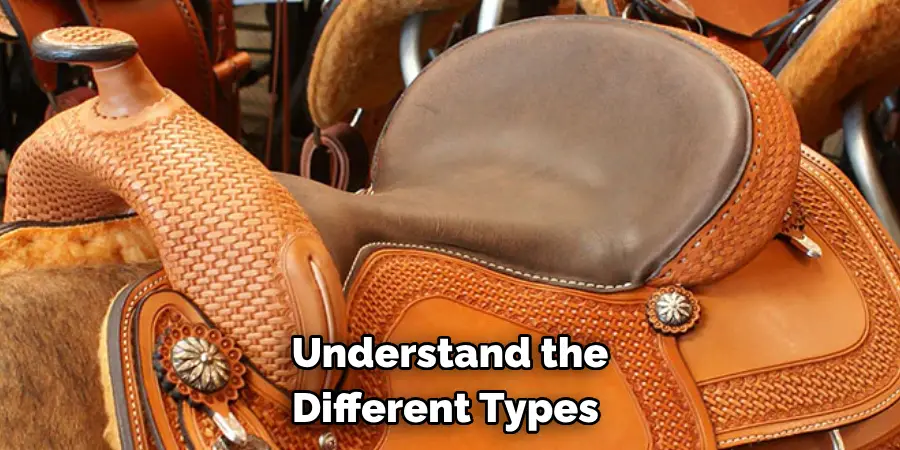
Frequently Asked Questions
How Often Should I Check My Saddle’s Fit?
It is recommended to check your saddle’s fit before and after each ride and have a professional assessment at least once a year. However, if you notice any changes in your horse’s behavior or conformation, it is important to check the fit more frequently.
Is It Necessary to Use a Saddle Pad?
Yes, using a saddle pad can provide extra cushioning and support for your horse’s back. It also helps protect the saddle from sweat and dirt. Make sure to choose an appropriate pad that fits well with your saddle.
Can I Use One Saddle for Different Riding Styles?
While some saddles may be versatile enough to work for different disciplines, it is best to choose a saddle specifically designed for your riding style. This ensures optimal comfort and performance for both horse and rider.
Should I Seek Professional Help Even If I Am Experienced in Fitting Saddles?
It is always a good idea to seek professional help when in doubt or if you have any concerns about the saddle’s fit. A trained saddle fitter can provide valuable insight and make adjustments for optimal comfort and performance for your horse. So, even if you are experienced, it is still beneficial to consult a professional.
What Are the Consequences of an Ill-Fitting Saddle?
An ill-fitting saddle can cause discomfort and pain for your horse, leading to behavioral issues such as bucking or biting. It can also potentially cause long-term damage to the horse’s back and hinder performance. That is why it is crucial to ensure a proper saddle fit for your equine partner’s well-being.
Conclusion
Fitting a saddle is not just about finding the right size and shape but also considering your horse’s conformation, weight distribution, and riding style. By avoiding common mistakes mentioned on how to fit a western saddle, using appropriate equipment such as saddle pads, and seeking professional help, you can ensure a comfortable and safe riding experience for you and your horse. Stay proactive in monitoring your saddle fit and make necessary adjustments to keep your equine partner happy and healthy for years to come.

